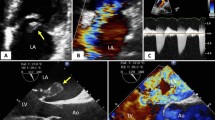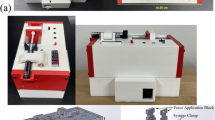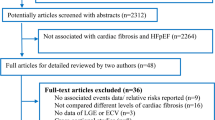Abstract
The aim of this study is to determine the effects of early intravenous (IV) infusion later followed by transendocardial (TE) injection of allogeneic mesenchymal stem cells (MSCs) following myocardial infarction (MI). Twenty-four swine underwent balloon occlusion reperfusion MI and were randomized into 4 groups: IV MSC (or placebo) infusion (post-MI day 2) and TE MSC (or placebo) injection targeting the infarct border with 2D X-ray fluoroscopy fused to 3D magnetic resonance (XFM) co-registration (post-MI day 14). Continuous ECG recording, MRI, and invasive pressure-volume analyses were performed. IV MSC plus TE MSC treated group was superior to other groups for contractility reserve (p = 0.02) and freedom from VT (p = 0.03) but had more lymphocytic foci localized to the peri-infarct region (p = 0.002). No differences were observed in post-MI remodeling parameters. IV followed by XFM targeted TE MSC therapy improves contractility reserve and suppresses VT but does not affect post-MI remodeling and may cause an immune response.






Similar content being viewed by others
Abbreviations
- MI:
-
Myocardial infarction
- MSC:
-
Mesenchymal stem cell
- XFM:
-
X-ray fused to MRI
- IV:
-
Intravenous
- TE:
-
Transendocardial
- LAD:
-
Left anterior descending
- MRI:
-
Magnetic resonance imaging
References
Burchfield, J. S., Xie, M., & Hill, J. A. (2013). Pathological ventricular remodeling: mechanisms: part 1 of 2. Circulation, 128(4), 388–400.
Xie, M., Burchfield, J. S., & Hill, J. A. (2013). Pathological ventricular remodeling: therapies: part 2 of 2. Circulation, 128(9), 1021–30.
Yeh, R. W., et al. (2010). Population trends in the incidence and outcomes of acute myocardial infarction. New England Journal of Medicine, 362(23), 2155–65.
Goodrich, A. D., & Hematti, P. (2014). Mesenchymal stem cell therapies: the quest for fine-tuning. Experimental Dermatology, 23(9), 632–3.
Pittenger, M. F., et al. (1999). Multilineage potential of adult human mesenchymal stem cells. Science, 284(5411), 143–7.
Aggarwal, S., & Pittenger, M. F. (2005). Human mesenchymal stem cells modulate allogeneic immune cell responses. Blood, 105(4), 1815–22.
Cho, D. I., et al. (2014). Mesenchymal stem cells reciprocally regulate the M1/M2 balance in mouse bone marrow-derived macrophages. Experimental & Molecular Medicine, 46, e70.
Kim, J., & Hematti, P. (2009). Mesenchymal stem cell-educated macrophages: a novel type of alternatively activated macrophages. Experimental Hematology, 37(12), 1445–53.
Hanson, S. E., Kim, J., & Hematti, P. (2013). Comparative analysis of adipose-derived mesenchymal stem cells isolated from abdominal and breast tissue. Aesthetic Surgery Journal, 33(6), 888–98.
Lushaj, E. B., et al. (2011). Mesenchymal stromal cells are present in the heart and promote growth of adult stem cells in vitro. Cytotherapy, 13(4), 400–6.
Le Blanc, K., et al. (2003). HLA expression and immunologic properties of differentiated and undifferentiated mesenchymal stem cells. Experimental Hematology, 31(10), 890–6.
Ryan, J. M., et al. (2005). Mesenchymal stem cells avoid allogeneic rejection. Journal of Inflammation (London), 2, 8.
Zimmet, J. M., & Hare, J. M. (2005). Emerging role for bone marrow derived mesenchymal stem cells in myocardial regenerative therapy. Basic Research in Cardiology, 100(6), 471–81.
Atoui, R., et al. (2008). Marrow stromal cells as universal donor cells for myocardial regenerative therapy: their unique immune tolerance. Annals of Thoracic Surgery, 85(2), 571–9.
Poh, K. K., et al. (2007). Repeated direct endomyocardial transplantation of allogeneic mesenchymal stem cells: safety of a high dose, “off-the-shelf”, cellular cardiomyoplasty strategy. International Journal of Cardiology, 117(3), 360–4.
Uccelli, A., Moretta, L., & Pistoia, V. (2008). Mesenchymal stem cells in health and disease. Nature Reviews Immunology, 8(9), 726–36.
Beitnes, J. O., et al. (2009). Long-term results after intracoronary injection of autologous mononuclear bone marrow cells in acute myocardial infarction: the ASTAMI randomised, controlled study. Heart, 95(24), 1983–9.
Leistner, D. M., et al. (2011). Transplantation of progenitor cells and regeneration enhancement in acute myocardial infarction (TOPCARE-AMI): final 5-year results suggest long-term safety and efficacy. Clinical Research in Cardiology, 100(10), 925–34.
Traverse, J. H., et al. (2011). Effect of intracoronary delivery of autologous bone marrow mononuclear cells 2 to 3 weeks following acute myocardial infarction on left ventricular function: the LateTIME randomized trial. JAMA, 306(19), 2110–9.
Meyer, G. P., et al. (2009). Intracoronary bone marrow cell transfer after myocardial infarction: 5-year follow-up from the randomized-controlled BOOST trial. European Heart Journal, 30(24), 2978–84.
Hare, J. M., et al. (2009). A randomized, double-blind, placebo-controlled, dose-escalation study of intravenous adult human mesenchymal stem cells (prochymal) after acute myocardial infarction. Journal of the American College of Cardiology, 54(24), 2277–86.
Vandervelde, S., et al. (2005). Signaling factors in stem cell-mediated repair of infarcted myocardium. Journal of Molecular and Cellular Cardiology, 39(2), 363–76.
Abbott, J. D., et al. (2004). Stromal cell-derived factor-1alpha plays a critical role in stem cell recruitment to the heart after myocardial infarction but is not sufficient to induce homing in the absence of injury. Circulation, 110(21), 3300–5.
Ma, J., et al. (2005). Time course of myocardial stromal cell-derived factor 1 expression and beneficial effects of intravenously administered bone marrow stem cells in rats with experimental myocardial infarction. Basic Research in Cardiology, 100(3), 217–23.
Lee, R. H., et al. (2009). Intravenous hMSCs improve myocardial infarction in mice because cells embolized in lung are activated to secrete the anti-inflammatory protein TSG-6. Cell Stem Cell, 5(1), 54–63.
Tomkowiak, M. T., et al. (2011). Targeted transendocardial therapeutic delivery guided by mri-x-ray image fusion. Catheterization and Cardiovascular Interventions, 78(3), 468–78.
de Silva, R., et al. (2008). Intracoronary infusion of autologous mononuclear cells from bone marrow or granulocyte colony-stimulating factor-mobilized apheresis product may not improve remodelling, contractile function, perfusion, or infarct size in a swine model of large myocardial infarction. European Heart Journal, 29(14), 1772–82.
Hanson, S.E., et al. (2013). Local delivery of allogeneic bone marrow and adipose tissue-derived mesenchymal stromal cells for cutaneous wound healing in a porcine model. Journal of Tissue Engineering and Regenerative Medicine.
Tomita, S., et al. (1999). Autologous transplantation of bone marrow cells improves damaged heart function. Circulation, 100(19 Suppl), II247–56.
Tang, J., et al. (2006). Mesenchymal stem cells participate in angiogenesis and improve heart function in rat model of myocardial ischemia with reperfusion. European Journal of Cardio-Thoracic Surgery, 30(2), 353–61.
Amado, L. C., et al. (2005). Cardiac repair with intramyocardial injection of allogeneic mesenchymal stem cells after myocardial infarction. Proceedings of the National Academy of Sciences of the United States of America, 102(32), 11474–9.
Hare, J. M., et al. (2012). Comparison of allogeneic vs autologous bone marrow-derived mesenchymal stem cells delivered by transendocardial injection in patients with ischemic cardiomyopathy: the POSEIDON randomized trial. JAMA, 308(22), 2369–79.
Williams, A. R., et al. (2013). Durable scar size reduction due to allogeneic mesenchymal stem cell therapy regulates whole-chamber remodeling. Journal of American Heart Association, 2(3), e000140.
Kuethe, F., et al. (2004). Lack of regeneration of myocardium by autologous intracoronary mononuclear bone marrow cell transplantation in humans with large anterior myocardial infarctions. International Journal of Cardiology, 97(1), 123–7.
Heldman, A. W., et al. (2014). Transendocardial mesenchymal stem cells and mononuclear bone marrow cells for ischemic cardiomyopathy: the TAC-HFT randomized trial. JAMA, 311(1), 62–73.
Arnold, R., et al. (2010). Absence of accelerated atherosclerotic disease progression after intracoronary infusion of bone marrow derived mononuclear cells in patients with acute myocardial infarction—angiographic and intravascular ultrasound—results from the TErapia Celular Aplicada al Miocardio Pilot study. American Heart Journal, 159(6), 1154 e1–8.
Surder, D., et al. (2010). Cell-based therapy for myocardial repair in patients with acute myocardial infarction: rationale and study design of the SWiss multicenter Intracoronary Stem cells Study in Acute Myocardial Infarction (SWISS-AMI). American Heart Journal, 160(1), 58–64.
Perin, E. C., et al. (2012). Effect of transendocardial delivery of autologous bone marrow mononuclear cells on functional capacity, left ventricular function, and perfusion in chronic heart failure: the FOCUS-CCTRN trial. JAMA, 307(16), 1717–26.
Chaudhry, F. A., et al. (1999). Prognostic implications of myocardial contractile reserve in patients with coronary artery disease and left ventricular dysfunction. Journal of the American College of Cardiology, 34(3), 730–8.
Kelle, S., et al. (2009). Prognostic value of myocardial infarct size and contractile reserve using magnetic resonance imaging. Journal of the American College of Cardiology, 54(19), 1770–7.
Petrofski, J. A., & Koch, W. J. (2003). The beta-adrenergic receptor kinase in heart failure. Journal of Molecular and Cellular Cardiology, 35(10), 1167–74.
Ungerer, M., et al. (1993). Altered expression of beta-adrenergic receptor kinase and beta 1-adrenergic receptors in the failing human heart. Circulation, 87(2), 454–63.
Woodall, M. C., et al. (2014). G protein-coupled receptor kinase 2: a link between myocardial contractile function and cardiac metabolism. Circulation Research, 114(10), 1661–70.
Bristow, M. R., et al. (1982). Decreased catecholamine sensitivity and beta-adrenergic-receptor density in failing human hearts. The New England Journal of Medicine, 307(4), 205–11.
Makarewich, C. A., et al. (2014). Transient receptor potential channels contribute to pathological structural and functional remodeling after myocardial infarction. Circulation Research, 115(6), 567–80.
Leosco, D., et al. (2008). Exercise promotes angiogenesis and improves beta-adrenergic receptor signalling in the post-ischaemic failing rat heart. Cardiovascular Research, 78(2), 385–94.
Iaccarino, G., et al. (2005). Ischemic neoangiogenesis enhanced by beta2-adrenergic receptor overexpression: a novel role for the endothelial adrenergic system. Circulation Research, 97(11), 1182–9.
Wang, D., et al. (2011). Intracoronary delivery of mesenchymal stem cells reduces proarrhythmogenic risks in swine with myocardial infarction. Irish Journal of Medical Science, 180(2), 379–85.
Schuleri, K. H., et al. (2009). Autologous mesenchymal stem cells produce reverse remodelling in chronic ischaemic cardiomyopathy. European Heart Journal, 30(22), 2722–32.
Williams, A. R., et al. (2013). Enhanced effect of combining human cardiac stem cells and bone marrow mesenchymal stem cells to reduce infarct size and to restore cardiac function after myocardial infarction. Circulation, 127(2), 213–23.
Acknowledgments
The authors would like to thank Craig Schneider and Medtronic, Minneapolis, MN for providing Reveal XT implanted loop recorders and assisting with device interrogation. Many thanks also to Peter Altman and Biocardia Inc. (San Carlos, CA) for making Helix catheters/Morph catheters available to us for pre-clinical studies.
Funding
This work was supported by the NIH/NHLBI Production Assistant for Cellular Therapies (PACT) contract number HHSN268201000010C. Statistical consultation support was provided by National Institutes of Health grant UL1TR000427 to the University of Wisconsin Institute of Clinical Translational Research from the National Center for Advancing Translational Sciences (NCATS).
Author information
Authors and Affiliations
Corresponding author
Ethics declarations
Conflict of Interest
The authors declare that they have no competing interests.
Human Studies/Informed Consent
No human studies were carried out by the authors for this article.
Animal Studies
All institutional and national guidelines for the care and use of laboratory animals were followed and approved by the appropriate institutional committees.
Additional information
Associate Editor Angela Taylor oversaw the review of this article
Clinical Relevance Statement
There is evidence to suggest that single dose administration of bone marrow-derived mesenchymal stem cells for the treatment of myocardial infarction offers short-term benefit. In clinical practice, serial dosing may be required; however, this has not been tested in pre-clinical models. Our data suggest that a biologically plausible and clinically practical delivery approach of intravenous followed by transendocardial catheter delivery of bone marrow-derived mesenchymal stem cells improves contractile reserve and suppresses ventricular arrhythmias.
Electronic supplementary material
Below is the link to the electronic supplementary material.
ESM 1
(PDF 3921 kb)
Supplemental Methods Table 1
(PDF 101 kb)
Supplemental Data Table 1
(PDF 90 kb)
Supplemental Data Table 2
(PDF 83 kb)
Supplemental Data Table 3
(PDF 88 kb)
Rights and permissions
About this article
Cite this article
Schmuck, E.G., Koch, J.M., Hacker, T.A. et al. Intravenous Followed by X-ray Fused with MRI-Guided Transendocardial Mesenchymal Stem Cell Injection Improves Contractility Reserve in a Swine Model of Myocardial Infarction. J. of Cardiovasc. Trans. Res. 8, 438–448 (2015). https://doi.org/10.1007/s12265-015-9654-0
Received:
Accepted:
Published:
Issue Date:
DOI: https://doi.org/10.1007/s12265-015-9654-0




